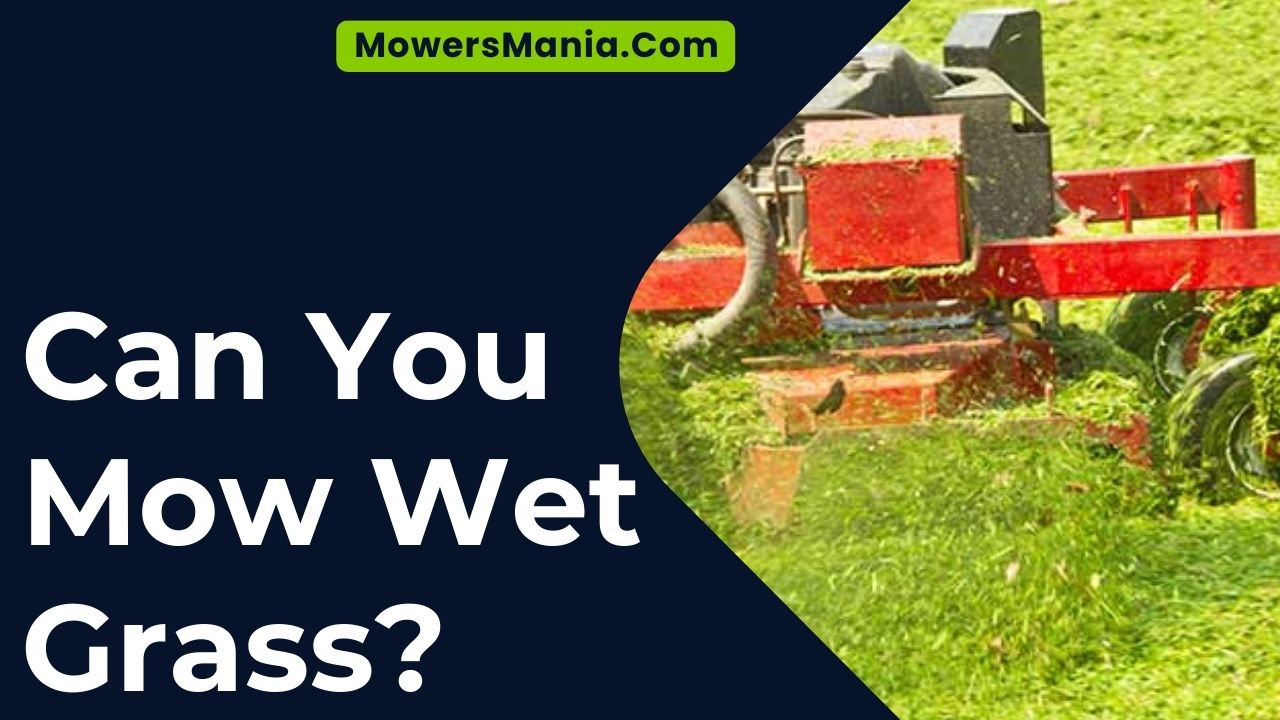Thinking about mowing wet grass? Wondering if it’s okay? Mowing wet grass can present some challenges and potential risks. Understanding the impact on your lawn, best practices, and equipment considerations is key to maintaining a healthy yard.
Timing and weather also play a crucial role in achieving the best results. In this guide, we’ll explore the risks of mowing wet grass, its impact on lawn health, and provide tips on the best mowing practices to follow.
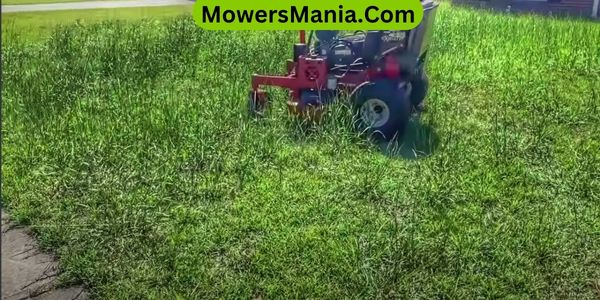
Whether you’re a seasoned lawn care enthusiast or new to the game, knowing how to approach mowing wet grass will help you keep your yard looking its best.
Risks of Mowing Wet Grass
Mowing wet grass can put you at risk of slipping and injuring yourself due to the slippery conditions created by the moisture.
The wet grass clippings can also stick to your shoes, making it easier to lose your footing. Another risk is that the wet grass can clog the lawnmower, leading to potential malfunctions or even accidents.
The combination of wet grass and electrical lawnmowers can also pose a risk of electrical shock if not handled carefully.
Moreover, the wet conditions can make it harder to maintain control of the lawnmower, increasing the likelihood of accidents.
Additionally, mowing wet grass can contribute to soil compaction, which can negatively impact the health of your lawn over time.
Wet grass is also more prone to tearing instead of being cleanly cut, which can make your lawn more susceptible to diseases.
Impact on Lawn Health
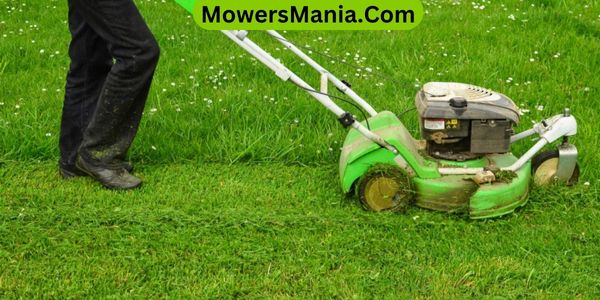
When mowing wet grass, you may unknowingly contribute to the compaction of the soil, which can detrimentally affect the overall health of your lawn.
Compacted soil restricts the flow of water, air, and nutrients to the grassroots, hindering their growth and health. This can lead to shallow root systems, making the grass more susceptible to stress, diseases, and weed invasion.
Additionally, the compacted soil reduces the ability of the grassroots to absorb essential nutrients, further weakening the lawn.
Moreover, mowing wet grass can result in the clumping of grass clippings, which can smother the lawn and create an environment conducive to diseases.
The excessive moisture from wet grass can also encourage the growth of fungi and mold, posing a threat to the well-being of your lawn.
Furthermore, the weight of the mower on wet soil can cause rutting and tearing of the grass, leaving the lawn vulnerable to further damage and creating an unsightly appearance.
Best Mowing Practices
You should wait for the grass to dry before mowing to ensure the best mowing practices and maintain a healthy lawn. Mowing wet grass can lead to an uneven cut, clumping of grass clippings, and potential damage to the lawn.
Here are some best mowing practices to keep in mind:
| Best Mowing Practices | Description |
|---|---|
| Wait for the grass to dry | Wet grass can result in an uneven cut and can also clog the mower deck. Waiting for the grass to dry ensures a cleaner and more precise cut. |
| Sharpen mower blades | Dull blades can tear the grass rather than cutting it cleanly. Sharp blades are essential for maintaining a healthy lawn. |
| Adjust mowing height | Setting the mower at the correct height for the type of grass in your lawn promotes healthier growth and discourages weeds. |
| Alternate mowing patterns | Changing the mowing direction each time you mow helps prevent soil compaction and keeps the grass standing upright for a better cut. |
Adhering to these best mowing practices will help you achieve a well-groomed and healthy lawn.
Equipment Considerations
To ensure the best mowing practices and maintain a healthy lawn, it’s essential to consider the equipment you use, including the mower blades and mowing height adjustments.
When mowing wet grass, the right equipment can make a significant difference in the outcome.
Here are some equipment considerations to keep in mind:
- Mower Blades: Ensure that your mower blades are sharp. Dull blades can tear wet grass, leading to an uneven cut and potentially causing damage to the lawn. Sharpen the blades regularly to maintain a clean cut even in wet conditions.
- Mowing Height Adjustments: Consider raising the mowing height slightly when mowing wet grass. Taller grass can help mitigate the impact of the mower on the wet ground and reduce the risk of lawn damage.
- Traction and Stability: If using a riding mower, ensure that it provides adequate traction and stability on wet surfaces. Check the tires for proper inflation and tread to minimize slippage and maintain control while mowing.
Timing and Weather Factors
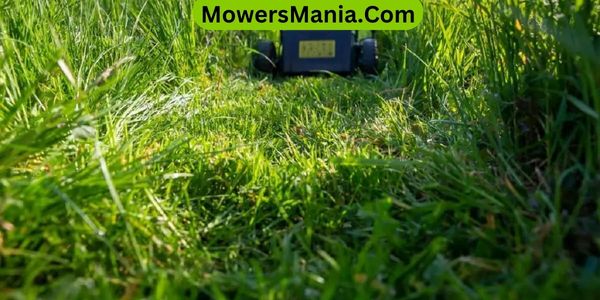
When it comes to mowing wet grass, timing and weather factors play a crucial role in the outcome of your yard work.
Mowing after rainfall can lead to grass clumping and potential damage to your lawn mower.
Understanding the ideal mowing conditions will help you achieve the best results and maintain the health of your grass.
Mowing After Rainfall
Mowing wet grass after rainfall can be challenging due to the increased risk of lawn damage and potential safety hazards.
However, there are certain timing and weather factors to consider that can help minimize these risks:
- Wait for the Right Conditions: It’s best to wait until the grass has dried out somewhat before attempting to mow it. This may mean waiting for a few hours or even a day after the rain has stopped.
- Check the Ground: Before mowing, check the ground to ensure it’s not too soft or waterlogged. Mowing on overly wet soil can lead to soil compaction and rutting.
- Adjust Mower Height: Raise the cutting height of the mower to avoid stressing the wet grass and to prevent clogging the mower deck with clippings.
Grass Clumping and Damage
You can minimize grass clumping and damage by adjusting your mowing schedule and technique according to the prevailing weather conditions and timing.
When it comes to mowing wet grass, timing and weather factors play a crucial role in preventing grass clumping and damage.
Here’s a simple guide to help you adapt your mowing practices:
| Weather Condition | Best Time to Mow |
|---|---|
| Sunny | Late morning or early afternoon |
| Overcast | Wait for the sun to dry the grass |
| Light Rain | Wait for the grass to dry completely |
| Heavy Rain | Avoid mowing until the grass dries out |
Ideal Mowing Conditions
To achieve the best results when mowing wet grass, you should consider the ideal timing and weather conditions to minimize potential damage.
- Timing: It’s best to mow wet grass when it’s absolutely necessary. If possible, wait for the grass to dry to reduce the risk of damage and clumping.
- Weather Conditions: Choose to mow wet grass during a sunny or breezy day. The combination of sunlight and wind helps to dry out the grass, making it easier to mow without causing harm.
Mowing wet grass should be a last resort, but if you must do so, paying attention to the timing and weather conditions can help minimize any negative effects on your lawn.
Tips for Mowing Wet Grass
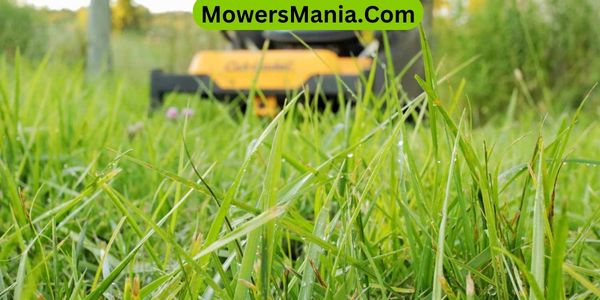
When mowing wet grass, it’s important to take certain precautions to avoid damage and ensure a clean cut.
First, raise your mower deck to the highest setting. This will prevent the soil from becoming compacted and damaging the grass. It will also help prevent the grass from getting stuck under the mower deck.
Next, consider using a sharp mower blade. Wet grass tends to clump more than dry grass, so a sharp blade will ensure clean cuts and minimize clumping.
Before you start mowing, clear any debris or obstacles from the lawn. This will prevent clogging and ensure even mowing.
When mowing wet grass, it’s advisable to go at a slower pace than usual. This allows the mower blades enough time to properly cut through the wet grass.
If possible, try to mow in the late morning or early afternoon. By this time, the dew has evaporated and the grass has dried slightly. Mowing in these conditions can make the process easier and prevent excessive clumping.
Lastly, keep an eye on the weather forecast. If more rain is expected, it’s best to avoid mowing wet grass. Additional moisture can exacerbate the problems associated with mowing in wet conditions.
Frequently Asked Questions [FAQs]
Can Mowing Wet Grass Damage the Blades of My Lawnmower?
Mowing wet grass can dull the mower blades and lead to clumping and uneven cuts. It’s best to wait for the grass to dry before mowing to maintain the sharpness of the blades and ensure a clean cut.
What Are the Potential Risks of Slipping and Falling While Mowing Wet Grass?
When mowing wet grass, the potential risks of slipping and falling are higher due to reduced traction. Wet grass is slippery, increasing the likelihood of accidents. Be cautious and consider waiting for the grass to dry.
Will Mowing Wet Grass Contribute to the Spread of Lawn Diseases?
Mowing wet grass can contribute to the spread of lawn diseases. The moisture creates an environment for fungal growth and can lead to the transmission of diseases between grass blades. It’s best to wait for the grass to dry.
Are There Specific Types of Grass That Are More Resilient to Being Mowed When Wet?
When mowing wet grass, some grass types like Kentucky bluegrass and perennial ryegrass are more resilient. However, it’s generally best to avoid mowing wet grass to prevent damage and promote a healthy lawn.
Can Mowing Wet Grass Lead to Soil Compaction and Drainage Issues in My Lawn?
Mowing wet grass can lead to soil compaction and drainage issues in your lawn. It’s best to wait for the grass to dry before mowing. This will help maintain the health and integrity of your lawn.
Conclusion
So, can you mow wet grass?
While it’s possible, it’s best to avoid it if you can. Mowing wet grass can lead to a range of issues including damage to your lawn, clogging of your mower, and increased safety risks.
If you must mow wet grass, make sure to take extra precautions and follow best practices to minimize potential damage and risks.

